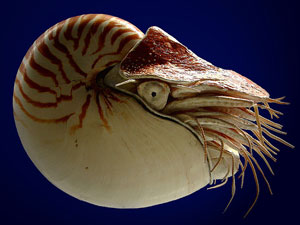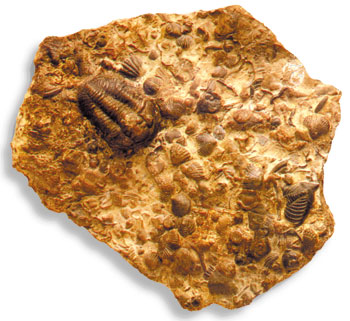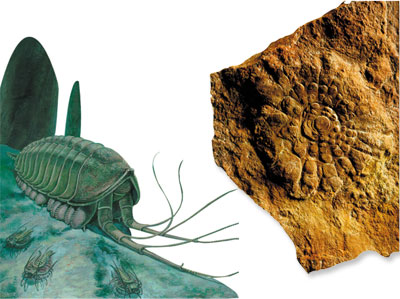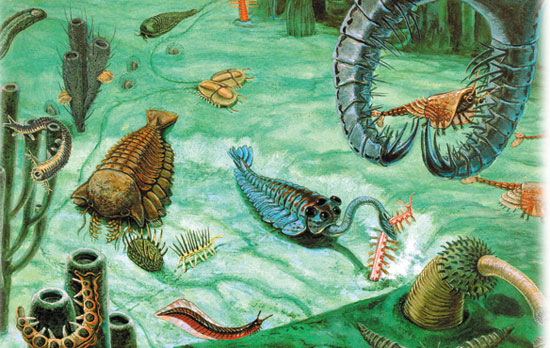The deepest stratum of earth that contains fossils of complex living things is the "Cambrian", which has an estimated age of 520 to 530 million years. The fossils unearthed in Cambrian rocks belonged to complex invertebrate species like snails, trilobites, sponges, worms, jelly fish, starfish, crustaceans and sea lilies. Most interestingly, all of these distinct species emerged all of a sudden without any predecessor.
 |  |
A still extant example of the Cambrian Period: Nautilus |
Richard Monastersky, the editor of Earth Sciences, which is one of the popular journals of evolutionist literature, admits this fact that put evolutionists into a quandary:
A half-billion years ago the remarkably complex forms of animals that we see today suddenly appeared. This moment, right at the start of the earth's Cambrian Period, some 550 million years ago, marks the evolutionary explosion that filled the seas with the earth's first complex creatures. The large animal phyla of today were present already in the early Cambrian and they were as distinct from each other as they are today.22
 | COMPLEX SYSTEMS
COMPLEX SYSTEMS |
How these distinct living species with no common ancestors could have emerged is a question that remains unanswered by evolutionists. The Oxford zoologist Richard Dawkins, one of the foremost advocates of the evolutionary theory in the world, makes this confession:
It is as though they (the species of the Cambrian) were just planted there, without any evolutionary history.23
 |
An illustration of the organisms that existed in the Cambrian Period |
The Cambrian explosion is clear evidence that God created all living things. The only explanation of the sudden emergence of organisms without any evolutionary ancestors is creation. Accordingly, Darwin wrote: "If numerous species, belonging to the same genera or families, have really started into life all at once, the fact would be fatal to the theory of descent with slow modification through natural selection."24
This fatal stroke that frightened Darwin comes from the Cambrian period, right at the outset of the fossil record.
 | The eye of the trilobite, one of the species of the Cambrian, had an extraordinary design. It consisted of hundreds of tiny eyes. Moreover, each of these tiny eyes had two different lenses. It is reckoned that this structure called the "doublet structure" allowed the trilobites to see underwater perfectly, without distortion. A professor of geology from the University of Harvard, David Raup says: "The trilobites used an optimal design which would require a well trained and imaginative optical engineer to develop today."25 This perfect eye structure was brought into being 530 million years ago all of a sudden in its perfect form. Additionally, the compound eye system of the trilobites has survived to our day without a single alteration. Some insects, such as bees and dragon-flies, have the same eye structure as did the trilobite. |
THE EYE OF THE TRILOBITE The compound eye structure of the trilobite |
22) Richard Monestarsky, "Mysteries of the Orient", Discover, April 1993, S. 40
23) Richard Dawkins, The Blind Watchmaker, London: W. W. Norton 1986, S. 229
24) Charles Darwin, The Origin of Species: A Facsimile of the First Edition, Harvard University Press, 1964, S. 302